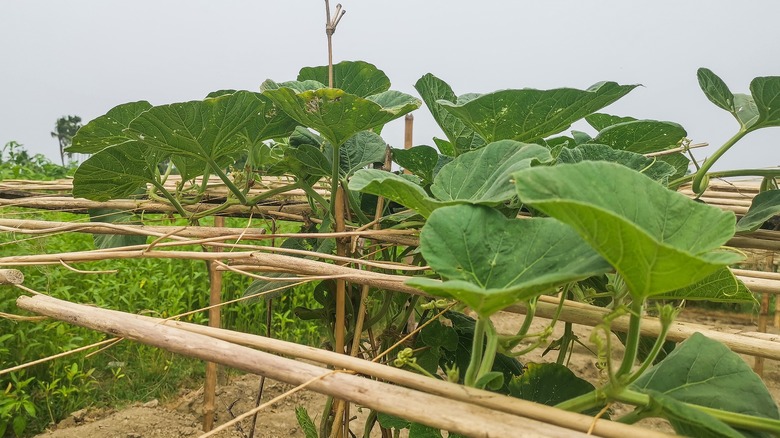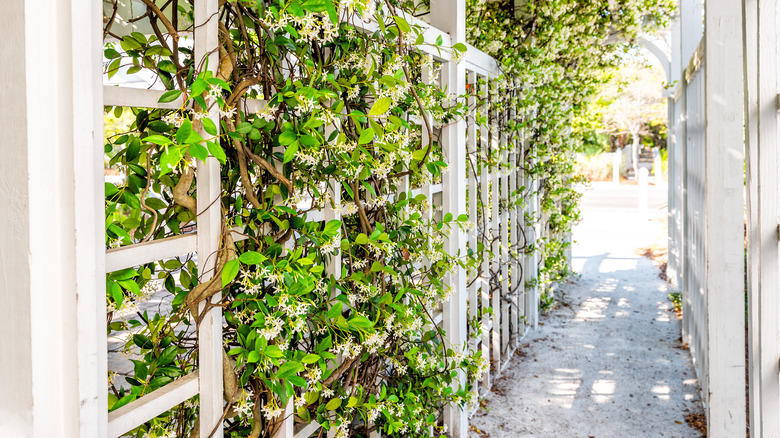What To Do If Your Climbing Plant Grows Past Its Trellis
By the end of summer, many climbing plants are sprinting to the finish line as if they have an eye on the calendar. In their quest for a gold medal, your vigorous vines may outgrow their supports. Short of trimming back your star clematis or bean plants, what can you do? Instead of stopping them in their tracks, let your plants keep reaching for the stars, but only figuratively. Instead of continuing their vertical ambitions, train the vines back down on an additional trellis or on the opposite side of a free-standing structure. There are scores of imaginative trellis ideas to maximize your outdoor space both horizontally and vertically.
A wall or arch of greenery adds enchantment to your garden. Vining flowers or food crops look luscious climbing a trellis, but they also can stay healthier as they grow, and make plants like pole beans easier to pick when trained on a support. Make the most of bountiful growth with side-by-side supports, arches, or twine. Mix in repurposed items for an eco- and budget-friendly surprise.
Have some support by your side
Climbing plants like to aim for the sun so they can get the most of this life-giving resource, and they work hard trying to get there quickly. Jack and the Beanstalk ingrained in us the image of a vine going perpetually up, but it doesn't have to. If your vines have topped out their trellis during a fruitful growing season, set up something for it to cling to nearby. If you have wall space next to an existing wall trellis, simply add another panel in the same style for continuity. If your trellis is next to a door or a window, you can train them to climb a support that frames the opening. String up some twine over the top and other side of the window or door. Hemp rope makes a strong garden trellis material on a budget.
If your at-capacity trellis is within a few feet of an overhang or another structure like a garage, a shed, or even a covered porch, attach some twine from the top of the trellis to the edge of the neighboring structure. Once your greenery has grown past the top of the support, bend the new, unsupported growth around the twine to continue on its journey.
Go over the top
Given climbing plants' preference for upward growth, convincing them to grow down may take some work. Are your pole beans growing like kudzu this year? If they're growing up a strictly vertical support, tie lengths of twine to the tops of the support, angle them toward the ground diagonally, and anchor them into the ground. Gently wind the tendrils that extend past the support onto the twine, and keep an eye on them as they get established growing along the lines.
If you don't already have an arbor or an arch set up near your prolific plant, it's not too late to DIY one. This solution works especially well if you have plenty of time before your first frost. A few feet away from the overgrown trellis, stand up another support that's a similar look and height to the established one. What you use to connect the two panels at the top is only limited by your imagination. Stick with twine for the easiest and cheapest link. For a more sturdy base that you can get many seasons' use out of, try creating a garden trellis from a few closet staples that no one really wants: wire hangers. Coax the vines over and into the new addition, and with any luck, you'll have a new yard feature before the end of the season.


